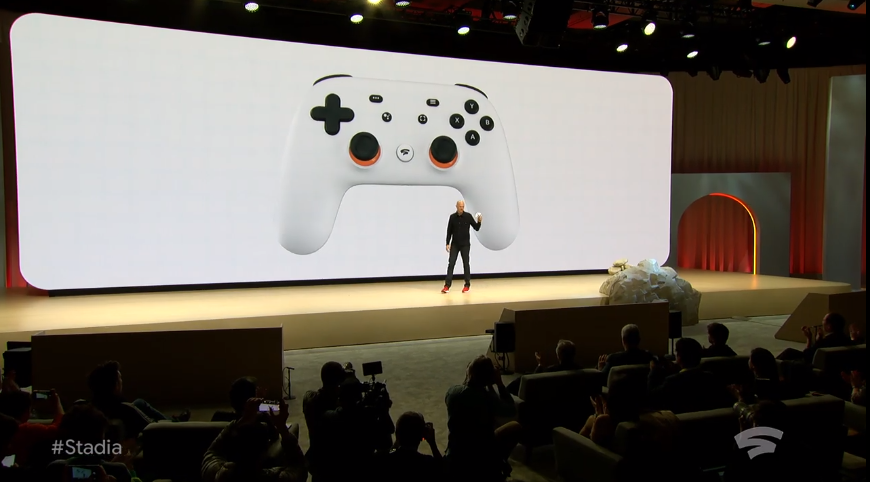 CLOUD
CLOUD
 CLOUD
CLOUD
 CLOUD
CLOUD
Google LLC today pulled back the curtains on Stadia, a new cloud service that will use specially designed chips to let consumers play desktop video games on any device.
Historically, the complex three-dimensional games that rule the market have required fairly powerful hardware to run. Many popular titles only work on computers with desktop-grade central processing units and graphics cards. Stadia will eliminate this requirement by deploying games in Google’s data centers, where specialized cloud instances will take over the computational heavy lifting.
The instances are set to run on custom graphics processing units designed specifically to support Stadia. Google said that the chips will be made by Advanced Micro Systems Inc. rather than Nvidia Corp., which dominates the market for both consumer and data center GPUs. AMD’s stock jumped nearly 12 percent on the news that it will supply the chips for the service.
Google claims that each one of the custom GPUs can provide 10.7 teraflops of processing power, significantly more than the single-digit teraflop performance offered by standalone video game consoles. A single teraflop equals a trillion computing operations per second.
In addition to an AMD GPU, each Stadia instance will sport a yet-unspecified CPU with a base frequency of 2.7 gigahertz and 16 gigabytes of memory. Google said that will enable the service to run games at a speedy 60 frames per second with a 4K resolution, which provides about four times as much pixel density as regular high-definition content. Google is aiming to add support for 8K and 120 fames per second further down the road.
The search giant promises that Stadia will be capable of streaming games to anything from laptops to mobile devices and smart TVs.
“Using our globally connected network of Google data centers, Stadia will free players from the limitations of traditional consoles and PCs,” Phil Harrison, the Google executive in charge of Stadia, wrote today. “When players use Stadia, they’ll be able to access their games at all times, and on virtually any screen. And developers will have access to nearly unlimited resources to create the games they’ve always dreamed of.”
The search giant hopes to set Stadia apart from rival game streaming services by integrating it with YouTube, which is a major hub of game-related content. Harrison said more than 200 million people watch gaming videos on the streaming service every day. Google is planning to give those users access to a “Play Now” button that will make it possible to launch a game instantly that’s featured in a YouTube video on Stadia.
The company is also working to win the attention of game developers. To support the creation of Stadia-optimized titles, Google has built a specialized artificial intelligence service called Style Transfer ML. It’s capable of automatically applying the aesthetic and colors of one image to another so graphic designers can, for example, model an in-game building after a historic landmark without having to recreate all the painstaking details themselves.
The service isn’t coming right away, though. Google plans to launch it in the U.S., Canada and “much of Europe” later this year.
Support our mission to keep content open and free by engaging with theCUBE community. Join theCUBE’s Alumni Trust Network, where technology leaders connect, share intelligence and create opportunities.
Founded by tech visionaries John Furrier and Dave Vellante, SiliconANGLE Media has built a dynamic ecosystem of industry-leading digital media brands that reach 15+ million elite tech professionals. Our new proprietary theCUBE AI Video Cloud is breaking ground in audience interaction, leveraging theCUBEai.com neural network to help technology companies make data-driven decisions and stay at the forefront of industry conversations.